Introduction
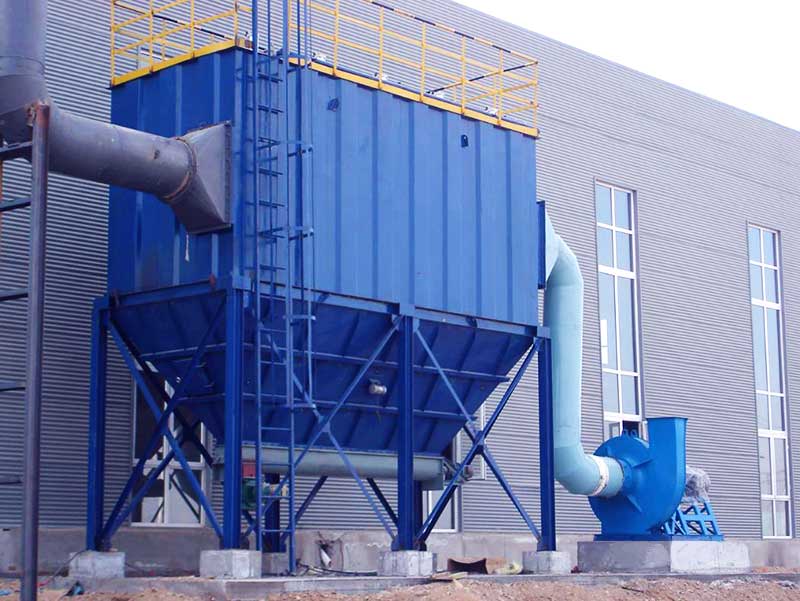
Dust collection is an essential process that is necessary for various industries. It involves capturing and removing dust and other airborne particles from a workspace to ensure a safe and healthy work environment. To achieve this, dust collection accessories are needed to complement the dust collection system.
Dust collection accessories come in various shapes and sizes, and each serves a specific purpose. These accessories help to capture dust and debris from different sources and prevent it from contaminating the air or settling on surfaces. The right dust collection accessories can significantly improve the efficiency of your dust collection system and increase the lifespan of your equipment.
However, with the wide range of options available, it can be challenging to find the perfect dust collection accessories that suit your industry’s needs. That’s why we have created this guide to help you understand the types of dust collection accessories available, the factors to consider when choosing them, and the best options for your industry. By the end of this guide, you’ll have a clear understanding of how to find the perfect dust collection accessories for your industry.
Understanding Dust Collection Accessories
Dust collection accessories are essential components of a dust collection system that help capture and remove dust and other particles from a workspace. These accessories work in conjunction with the dust collector to ensure that the air quality in the workspace is safe and healthy for workers.
There are different types of dust collection accessories available, each with its specific function. Some of the most common dust collection accessories include dust hoods, blast gates, ductwork, and filters.
Dust hoods are installed over equipment that generates dust to capture the particles at the source. Blast gates, on the other hand, are used to regulate airflow through the dust collection system. Ductwork is used to transport the captured dust and debris from the dust hoods to the dust collector. Lastly, filters are used to trap fine particles that may escape the dust collection system.
Using the right dust collection accessories is essential to ensure the effectiveness of the dust collection system. It’s crucial to choose accessories that are appropriate for the specific needs of your industry and the type of equipment that generates dust. The size of your workspace, the type of dust generated, and the health and safety regulations in your industry are also essential factors to consider when choosing dust collection accessories.
Dust collection accessories play a critical role in maintaining a safe and healthy work environment. By understanding the different types of dust collection accessories and their functions, you can choose the right accessories for your dust collection system to ensure optimal performance.
Factors to Consider When Choosing Dust Collection Accessories
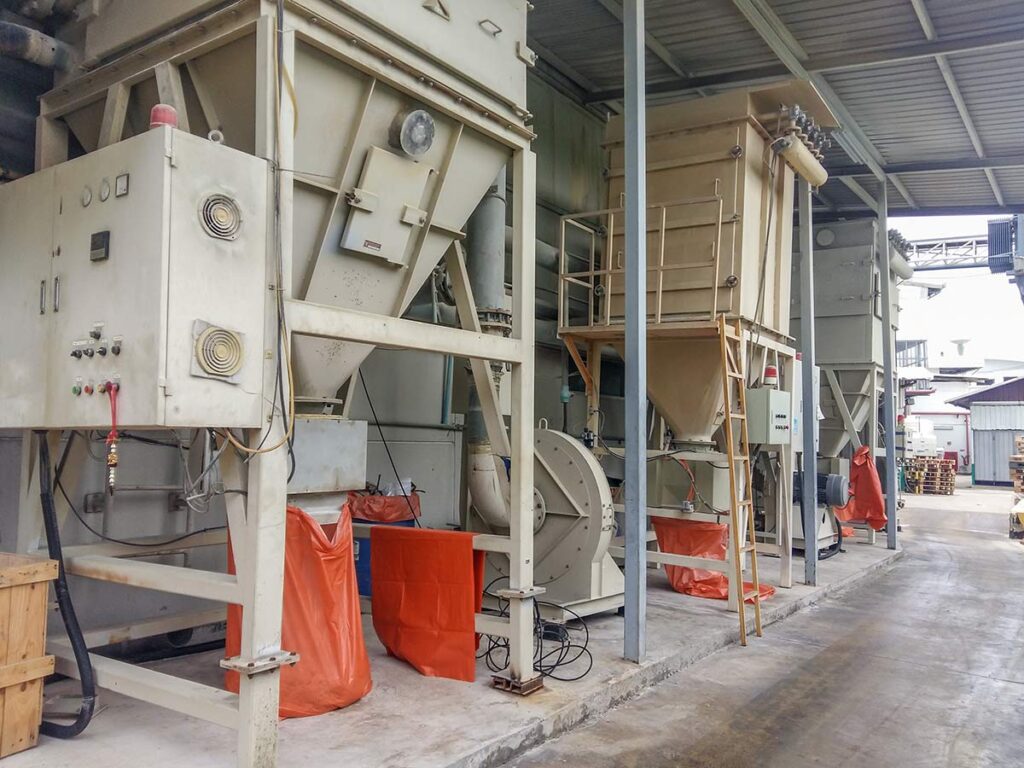
Choosing the right dust collection accessories is critical to ensure the effectiveness of your dust collector systems. There are several factors to consider when choosing dust collection accessories for your industry. Here are some of the most important factors to keep in mind:
Industry-specific needs
Different industries generate different types of dust and debris, so it’s essential to choose dust collection accessories that are appropriate for your industry’s specific needs. For example, the type of dust generated in the woodworking industry is different from the type of dust generated in the food industry. It’s important to choose dust collection accessories that are designed to capture the specific type of dust generated in your industry.
For example, the woodworking industry generates fine sawdust and shavings that require dust collection accessories designed to capture these small particles effectively. In contrast, the metalworking industry generates larger metal chips and debris that require different dust collection accessories to effectively capture and remove the particles.
Other industries that generate dust and debris, such as food processing, pharmaceuticals, and plastics, also require specific dust collection accessories. In the food processing industry, dust collection accessories must be designed to meet food safety standards and prevent contamination. The pharmaceutical industry requires dust collection accessories that meet cleanroom standards to ensure that the air in the facility is free of contaminants that could compromise the integrity of the products.
It’s essential to consider the specific needs of your industry when selecting dust collection accessories. Choosing accessories that are not designed to capture the specific type of dust generated in your industry can result in poor performance and increased health and safety risks for workers.
To choose the right dust collection accessories for your industry, you should consult with a dust collection expert or supplier who can help you identify the specific needs of your industry and recommend the appropriate accessories. A reputable supplier will be familiar with the latest regulations and standards and can help you select accessories that meet these requirements. By choosing the right dust collection accessories, you can ensure the optimal performance of your dust collection system and a safe and healthy work environment for your workers.
Workspace size
The size of your workspace is an essential factor to consider when selecting dust collection accessories. The larger the workspace, the more dust and debris that will be generated, and the more powerful the dust collection system and accessories required to capture and remove the particles effectively. A larger workspace will require more extensive ductwork and more dust collection hoods to ensure optimal dust collection.
Another consideration when it comes to workspace size is the power of the dust collection system. A larger workspace will require a more powerful dust collector to capture and remove the particles effectively. Choosing a dust collector that is too small for the size of your workspace will result in poor performance and increased health and safety risks for workers.
To determine the appropriate size of your dust collection system and accessories, you should consult with a dust collection expert or supplier. They can help you calculate the airflow requirements for your workspace and recommend the appropriate size of the dust collector and ductwork required.
It’s also important to consider the future growth of your business when selecting dust collection accessories. If you anticipate that your workspace will grow in the future, it’s essential to choose a dust collector system and accessories that can be easily expanded to accommodate the additional space and equipment.
Equipment type
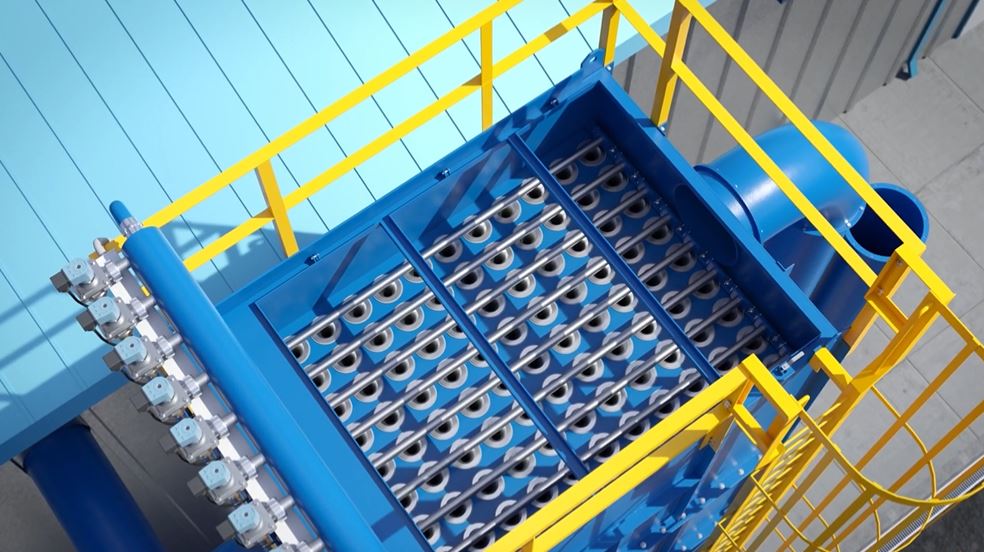
The type of equipment used in your industry is another crucial factor to consider when selecting dust collection accessories. Different types of equipment generate different types of dust and debris, and the dust collection accessories required to capture and remove the particles will vary accordingly.
For example, in the woodworking industry, different types of equipment such as saws, sanders, and routers generate different types of dust and debris. Each of these types of equipment requires specific dust collection accessories to capture and remove the particles effectively.
Similarly, in the metalworking industry, different types of equipment such as lathes, grinders, and drilling machines generate different types of dust and debris. Each of these types of equipment requires specific dust collection accessories to capture and remove the particles effectively.
Other industries, such as food processing and pharmaceuticals, also require specific dust collection accessories based on the type of equipment used. For example, in the food processing industry, cutting and grinding equipment generate dust and debris that require specific dust collection accessories designed to meet food safety standards.
It’s essential to consider the specific types of equipment used in your industry when selecting dust collection accessories. Failure to choose accessories that are designed to capture the specific type of dust generated by the equipment can result in poor performance and increased health and safety risks for workers.
To choose the right dust collection accessories for your equipment, you should consult with a dust collection expert or supplier. They can help you identify the specific types of dust generated by your equipment and recommend the appropriate accessories needed to capture and remove the particles effectively.
Health and safety regulations
Health and safety regulations are essential factors to consider when selecting dust collection accessories. There are several regulations and standards that dictate the requirements for dust collection in various industries, and failure to comply with these regulations can result in fines and penalties, as well as increased health and safety risks for workers.
For example, the Occupational Safety and Health Administration (OSHA) in the United States has regulations that mandate specific airflow rates and filtration efficiency for dust collection systems in different industries. These regulations are designed to ensure that workers are not exposed to hazardous levels of dust and debris, which can cause respiratory problems and other health issues.
Other regulations and standards, such as the National Fire Protection Association (NFPA) standards, require specific dust collection accessories in industries where there is a risk of combustible dust. These standards require the use of explosion-proof dust collection equipment and accessories to prevent explosions and fires.
It’s essential to ensure that the dust collection accessories you choose meet the applicable regulations and standards for your industry. Failure to comply with these regulations can result in fines and penalties, as well as increased health and safety risks for workers.
To ensure compliance with health and safety regulations, it’s recommended to consult with a dust collection expert or supplier who is familiar with the latest regulations and standards. They can help you select accessories that meet your requirements and ensure that your dust collection systems are operating at optimal performance.
Cost and maintenance
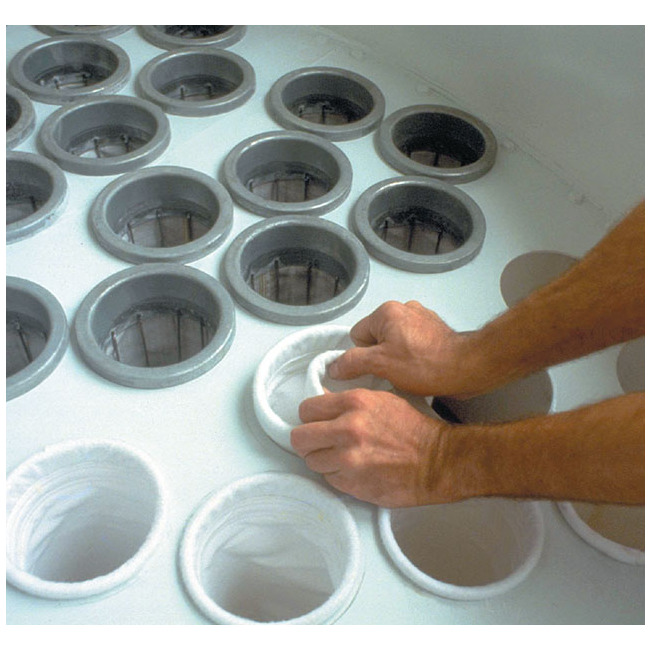
Cost and maintenance are important factors to consider when selecting dust collection accessories. The cost of the accessories can vary widely depending on the type and quality of the product, as well as the supplier. It’s essential to consider the cost of the accessories in relation to your budget, as well as the long-term cost of ownership.
In addition to the upfront cost of the accessories, it’s essential to consider the cost of maintenance. Some accessories may require frequent cleaning, replacement, or repairs, which can add to the long-term cost of ownership. It’s important to choose accessories that are durable and require minimal maintenance to minimize downtime and repair costs.
When considering the cost and maintenance of dust collection accessories, it’s also important to consider the impact on the overall performance of the dust collection system. Choosing low-quality accessories to save on cost can result in poor performance of the system, which can result in increased health and safety risks for workers and increased downtime and repair costs.
To ensure that you select cost-effective and low-maintenance accessories, it’s important to work with a reputable supplier or dust collection expert. They can provide advice on the best accessories for your needs and help you identify products that offer a good balance between cost and performance.
Choosing the right dust collection accessories requires careful consideration of several factors, including industry-specific needs, workspace size, equipment type, health and safety regulations, and cost and maintenance. By considering these factors, you can choose the right dust collection accessories for your industry to ensure optimal dust collection and a safe and healthy work environment.
Types of Dust Collection Accessories for Different Industries
There are various types of dust collection accessories available, and the choice of accessories will depend on the specific needs of the industry. Here are some examples of the types of dust collection accessories that are commonly used in different industries:
Dust Collection Accessories for Woodworking
Woodworking creates a lot of fine dust particles that can pose a health hazard to workers, and fine dust can also damage equipment. Therefore, effective dust collection is crucial for woodworking operations. The following dust collector accessories are commonly used in the woodworking industry to collect dust:
- Cyclones: Cyclones are effective in separating large particles from the air stream before they reach the dust collector. They can help reduce the load on the collector and improve its efficiency. Cyclones are commonly used in woodworking to prevent damage to the collector from large wood chips.
- Bag Filters: Bag filters are commonly used in woodworking to capture fine wood dust particles. They are highly efficient and can capture particles as small as 0.5 microns. Bag filters are often used in conjunction with cyclones.
- Ductwork: A dust collection hose is used to transport the air and dust from the source to the collector. In woodworking, spiral ductwork is often used to prevent the buildup of sawdust and chips.
- Hoods: Hoods are used to capture dust at the source. In woodworking, downdraft tables are commonly used to capture dust and chips from sanding and grinding operations.
Dust Collection Accessories for Metalworking
Metalworking operations also generate a lot of fine dust particles, which can pose a health hazard to workers and damage equipment. The following dust collector accessories are commonly used in the metalworking industry:
- Cartridge Filters: Cartridge filters are highly efficient and can capture fine particles. They are commonly used in metalworking operations to capture fumes and fine metal dust.
- Ductwork: Dust collection hoses are used for the movement of air and dust particles from where they are generated. In metalworking, flexible ductwork is often used to allow for the movement of equipment and to prevent the buildup of dust and chips.
- Hoods: Hoods are used to capture dust and fumes at the source. In metalworking, source-capture hoods are often used to capture fumes from welding and grinding operations.
Dust Collection Accessories for the Food Industry
The food industry also requires effective dust collection to maintain cleanliness and hygiene standards. The following dust collection accessories are commonly used in the food industry:
- Cyclones: Cyclones are effective in separating large particles from the air stream before they reach the collector. They are commonly used in the food industry to prevent contamination from food particles.
- Bag Filters: Bag filters are used in dust collectors to capture dust particles inside the air filtration system. They are commonly used in the food industry to capture flour and sugar dust.
- Ductwork: Ductwork is used to transport the air and dust from the source to the collector. In the food industry, smooth-walled ductwork is often used to prevent the buildup of food particles.
- Hoods: In the food industry, capture hoods are commonly used to capture dust from mixing and packaging operations.
Dust Collection Accessories for Pharmaceutical and Chemical Industries
The pharmaceutical and chemical industries require effective dust collection to maintain cleanliness and safety standards. The following dust collection accessories are commonly used in these industries:
- HEPA Filters: HEPA filters are highly efficient and can capture very fine dust particles as small as 0.3 microns. They are commonly used in the pharmaceutical and chemical industries to capture fine dust particles.
- Explosion Protection Equipment: Explosion protection equipment is used to prevent explosions from combustible dust particles. Explosion vents, suppression systems, and isolation devices are commonly used in these industries.
- Ductwork: In pharmaceutical and chemical industries, smooth-walled ductwork is often used to prevent the buildup of particles.
- Hoods: In the pharmaceutical and chemical industries, source-capture hoods are commonly used to capture fumes from chemical reactions and particle generation during powder handling.
Dust Collection Accessories for Construction and Mining Industries
Construction and mining operations generate a lot of dust and particulate matter, which can pose a health hazard to workers and damage equipment. The following dust collection accessories are commonly used in these industries:
- Wet Scrubbers: Wet scrubbers are effective in capturing large particles and gases. They are commonly used in construction and mining to capture dust and fumes from crushing and grinding operations.
- Bag Filters: Bag filters are highly efficient and can capture fine particles. They are commonly used in construction and mining to capture dust from drilling and blasting operations.
- Ductwork: Ductwork is used to move the contaminated air and dust from the where it is produced to the where it’s cleaned by the filter media. In construction and mining, flexible ductwork is often used to allow for the movement of equipment and to prevent the buildup of dust and chips.
- Hoods: Hoods are used to capture dust and fumes at the source. In construction and mining, source-capture hoods are commonly used to capture dust and fumes from cutting and welding operations.
In essence, different industries have specific needs when it comes to dust collection accessories. It is essential to consider the type of industry, the size of the workspace, the equipment being used, health and safety regulations, and cost and maintenance when selecting dust collection accessories. Choosing the right accessories can improve efficiency, protect equipment, and most importantly, ensure the health and safety of workers.
Maintenance and Safety Tips
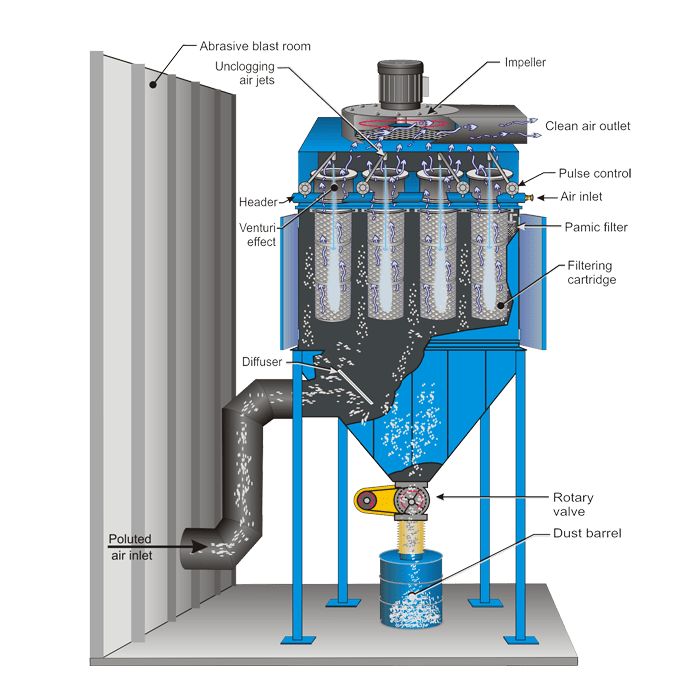
Proper maintenance of dust collection accessories is essential to ensure their efficiency and longevity. Here are some tips for maintaining your dust collection accessories:
Clean regularly
Dust collection accessories, such as filters and bags, should be cleaned regularly to prevent clogging and ensure optimal performance. Depending on usage, filters and bags may need to be cleaned every few weeks or months.
Cleaning your dust collection accessories regularly is essential for their proper functioning and longevity. The primary purpose of dust collection accessories is to trap dust and debris, which can accumulate quickly and lead to clogging. When the dust and debris accumulate, it can reduce the airflow and the suction power of your dust collection systems, causing it to work inefficiently or even break down.
Therefore, it is important to clean your dust collection accessories on a regular basis to prevent clogging and maintain optimal performance. Depending on the type of dust collection accessory and your usage, you may need to clean them every few weeks or months.
Some common dust collection accessories that require regular cleaning include filters, bags, and ductwork. To clean these accessories, you can use a variety of methods, such as shaking, tapping, or washing. For example, some filters can be cleaned by tapping them to dislodge the dust and debris. Other filters may require washing with soap and water to remove dirt and dust.
It is important to follow the manufacturer’s instructions for cleaning your dust collection accessories. Some accessories may require specific cleaning methods or may need to be replaced instead of cleaned. Following the manufacturer’s instructions can ensure that you are cleaning your accessories correctly and safely.
Check for damage
Inspect your dust collection accessories regularly for any signs of wear and tear or damage. Replace any damaged or worn-out parts immediately to prevent accidents or further damage.
Checking for damage is an important aspect of maintaining your dust collection accessories. Over time, dust collection accessories such as hoses, ducts, and connectors can become damaged due to wear and tear, exposure to chemicals or moisture, or accidental impacts. A damaged dust collection accessory can affect the performance of your system, cause leaks, or even create a safety hazard.
Regularly inspecting your dust collection accessories for damage can help you identify problems early on and prevent more serious issues from developing. Some signs of damage to look for include cracks, tears, holes, or other forms of physical damage. You should also check for signs of wear, such as fraying or thinning of hoses or ducts.
If you notice any damage to your dust collection accessories, you should address it as soon as possible. Depending on the severity of the damage, you may need to repair or replace the accessory. For minor damage, such as a small tear in a hose, you may be able to patch it with duct tape or a specialized repair kit. For more serious damage, such as a large crack in a duct, you will likely need to replace the entire accessory.
Checking for damage is especially important when dealing with accessories that are exposed to high temperatures or abrasive materials, such as those used in metalworking or construction industries. These accessories are more likely to experience wear and tear and may require more frequent inspections.
Lubricate moving parts
Moving parts, such as fans and motors, should be lubricated regularly to ensure smooth operation and prevent overheating.
Lubricating moving parts is an essential part of maintaining dust collection accessories that have mechanical components, such as fans, motors, and bearings. These moving parts are crucial for the functioning of your dust collection system, and without proper lubrication, they can become damaged, wear out, or even stop working altogether.
Lubrication helps to reduce friction between the moving parts, which can cause heat buildup and wear and tear. By applying a lubricant, you create a protective layer that minimizes contact between the metal components and reduces the chance of damage or wear.
Different dust collection accessories have different lubrication requirements, and it is important to follow the manufacturer’s recommendations for your specific accessory. Some accessories, such as bearings, may require regular lubrication with a specific type of lubricant. Other accessories, such as fans or motors, may come pre-lubricated and require less maintenance.
When lubricating your dust collection accessories, it is important to use the right type of lubricant and to apply it correctly. Using the wrong type of lubricant can cause damage or even make the problem worse. Over-lubricating can also be a problem, as it can cause a buildup of excess lubricant that can attract dust and debris and reduce the performance of your system.
In general, it is recommended to lubricate your dust collection accessories at least once a year, or more frequently if you notice any signs of wear or damage. You should also follow any specific instructions provided by the manufacturer, such as how to access the moving parts for lubrication or how much lubricant to use.
Follow the manufacturer's instructions
Always follow the manufacturer’s instructions for maintenance and replacement of parts. Improper maintenance can lead to decreased performance or even accidents.
Following the manufacturer’s instructions is a crucial aspect of maintaining your dust collection accessories. These instructions are designed to ensure optimal performance, prevent damage, and extend the lifespan of your equipment.
Different types of dust collection accessories have unique maintenance requirements, which is why it is essential to follow the manufacturer’s recommendations for your specific equipment. For example, some accessories may require regular cleaning or lubrication, while others may need to be replaced after a certain amount of use.
It is important to read and understand the manufacturer’s instructions before using your dust collection accessories for the first time. These instructions typically include information on assembly, installation, operation, and maintenance. They may also include safety precautions and troubleshooting tips.
By following the manufacturer’s instructions, you can avoid common mistakes that can cause damage or reduce the performance of your dust collection accessories. For example, using the wrong type of filter or replacement part can cause airflow problems and reduce the effectiveness of your system. Similarly, over-tightening bolts or screws can cause damage to the equipment.
Following the manufacturer’s instructions can also help you to identify and resolve issues before they become more serious. For example, if you notice unusual noises or vibrations in your dust collection systems, the manufacturer’s instructions may provide guidance on how to diagnose and fix the problem.
Importance of following safety guidelines

Dust collection accessories can pose safety risks if not used properly. Always follow safety guidelines when operating these accessories.
Following safety guidelines is critical when working with dust collection accessories. These guidelines are designed to prevent injuries, protect workers, and ensure safe operation of the equipment.
Dust collection accessories can be hazardous if not used properly. For example, the collection bags or canisters can become clogged or overloaded, causing the equipment to overheat or malfunction. Dust and debris can also accumulate on the equipment, increasing the risk of fire or explosion.
By following safety guidelines, you can reduce the risk of accidents and injuries when using your dust collection accessories. These guidelines may include:
- Wearing appropriate safety gear – Depending on the type of equipment you are using, safety gear such as gloves, safety glasses, and respirators may be required to protect against dust and debris.
- Proper grounding – Dust collection accessories can generate static electricity, which can be dangerous if not properly grounded. Make sure to follow the manufacturer’s instructions for grounding the equipment.
- Regular maintenance – Regular maintenance of your dust collection accessories can help prevent accidents and prolong the life of the equipment. Check for damage, clean the equipment regularly, and replace worn or damaged parts.
- Proper use and handling – It’s important to use dust collection accessories only for their intended purposes and to handle them carefully. For example, do not use the equipment if it is damaged or if you are not trained in its use.
- Emergency procedures – Be familiar with emergency procedures in case of accidents, such as a fire or explosion. This may include having fire extinguishers nearby or knowing how to shut off power to the equipment.
Safety gear required when handling dust collection accessories
When handling dust collection accessories, safety gear such as goggles, gloves, and a respirator mask should be worn to protect against dust and debris.
When handling dust collection accessories, it is important to wear appropriate safety gear to protect yourself from exposure to dust and debris, as well as potential hazards associated with the equipment. The specific safety gear required may depend on the type of equipment and the materials being handled, but some common safety gear includes:
- Respirators – Respirators are designed to protect your lungs from inhaling dust and other small particles. Depending on the type of dust and debris being generated, different types of respirators may be required, such as half-face or full-face respirators.
- Safety glasses or goggles – Safety glasses or goggles can protect your eyes from dust and debris that can cause eye irritation or injury.
- Gloves – Gloves can protect your hands from cuts, punctures, and other injuries when handling equipment or materials.
- Protective clothing – Depending on the type of dust and debris being generated, it may be necessary to wear protective clothing, such as coveralls or aprons, to prevent contamination of your clothing or skin.
- Hearing protection – Some dust collection equipment can generate noise that exceeds safe levels, which can damage your hearing over time. Wearing earplugs or earmuffs can help reduce your exposure to loud noise.
It’s important to note that the specific safety gear required may vary depending on the type of equipment and materials being handled. Before using any dust collection equipment, be sure to review the manufacturer’s instructions and safety guidelines to determine the appropriate safety gear required.
Conclusion

In conclusion, dust collection accessories are essential for maintaining a safe and healthy working environment in various industries. They help to capture harmful dust and debris, protecting workers from respiratory problems and other health hazards. It is important to choose the right dust collection accessories based on various factors such as industry-specific needs, workspace size, equipment type, health and safety regulations, cost, and maintenance.
When choosing dust collection accessories, it’s essential to consider these factors carefully to ensure that you select the most appropriate equipment for your needs. By doing so, you can avoid potential health risks, increase the lifespan of your equipment, and maintain a clean and safe working environment.
We hope that this guide has provided you with valuable insights into the types of dust collection accessories available, their features and benefits, and the key factors to consider when choosing them. By following the recommendations in this guide, you can find the perfect dust collection accessories for your industry.
We encourage you to make use of the information provided in this guide to make an informed decision when selecting dust collection accessories. By doing so, you can help to create a safer and healthier working environment for yourself and your employees.




